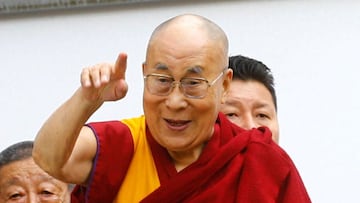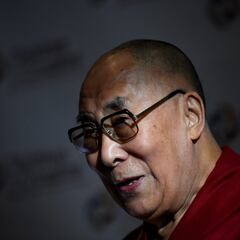What is the religion of the Dalai Lama, where is he from and why is in exile?
The Buddhist leader went into exile in 1959 following a failed uprising against Chinese rule in Tibet and has since been living in India.


The Dalai Lama is the most prominent spiritual leader of the Tibetan Buddhist tradition. Tibetan Buddhism is a form of Mahayana Buddhism that developed in the country, incorporating elements of Tibetan culture alongside other Buddhist traditions. There are three main sectors of Buddhism, Theravada, Mahayana, and Vajrayana, each with their own unique teachings and practices.
Central to Buddhist teachings is the Four Noble Truths, which describe the nature of suffering, called dukkha, its causes. The path to its cessation is called the Eightfold Path, which includes understanding, intention, speech, action, livelihood, effort, mindfulness, and concentration.
Buddhists believe in the concept of karma, that a person’s actions in this life will affect their future lives. The ultimate goal of Buddhism is to achieve nirvana, which is a state of supreme liberation from suffering and rebirth.
The Dalai Lamas devote their lives, or single life if you believe in reincarnation, to the practice and promotion of Buddhist teachings, particularly the principles of compassion, nonviolence, and wisdom. While the Dalai Lama is a Buddhist, he has also been a strong advocate for interfaith dialogue and understanding, and has sought to promote cooperation among people of different religions and backgrounds.
The Tibetan revolt and its consequences
At the end of the Chinese civil war in 1949, the new communist government took steps to reassert its control over the territories that had broken away from the Qing Empire at its collapse in 1912. This included areas with non-Chinese ethnic minorities such as the Kham and Tibetan people.
In 1951 an agreement was reached that Tibet would be an autonomous region of China. However, due to its feudal society and monarchical traditions under the Dalai Lama the central government wished to impose strict land reform as well as the institution of socialist policies. Indeed, the 14th Dalai Lama himself has called himself a marxist.
Related stories
The first major revolt against the Chinese took place in 1959, when tensions between the government and the Tibetan people reached a boiling point. In March 1959, a popular uprising broke out in the Tibetan capital of Lhasa and the threat of an armed invasion convinced the Dalai Lama and his entourage to flee Tibet. They settled in northern India.
Tibet has remained an autonomous province of China but under a much stricter hold while the Dalai Lama has yet to return to his homeland.
